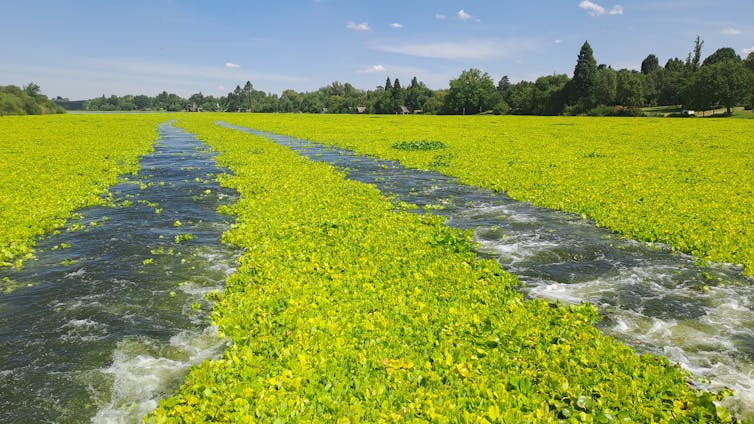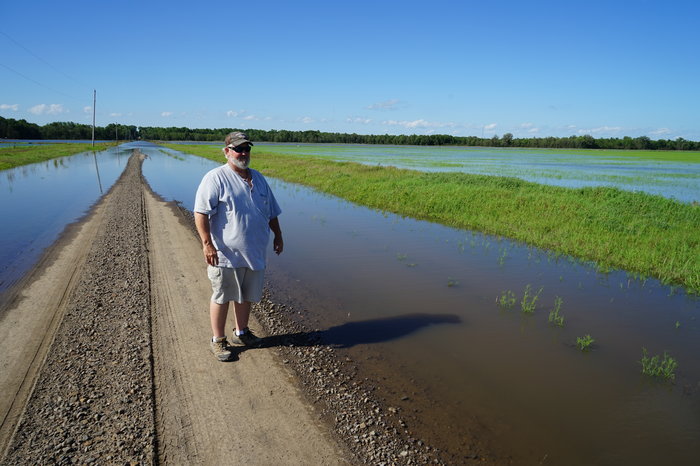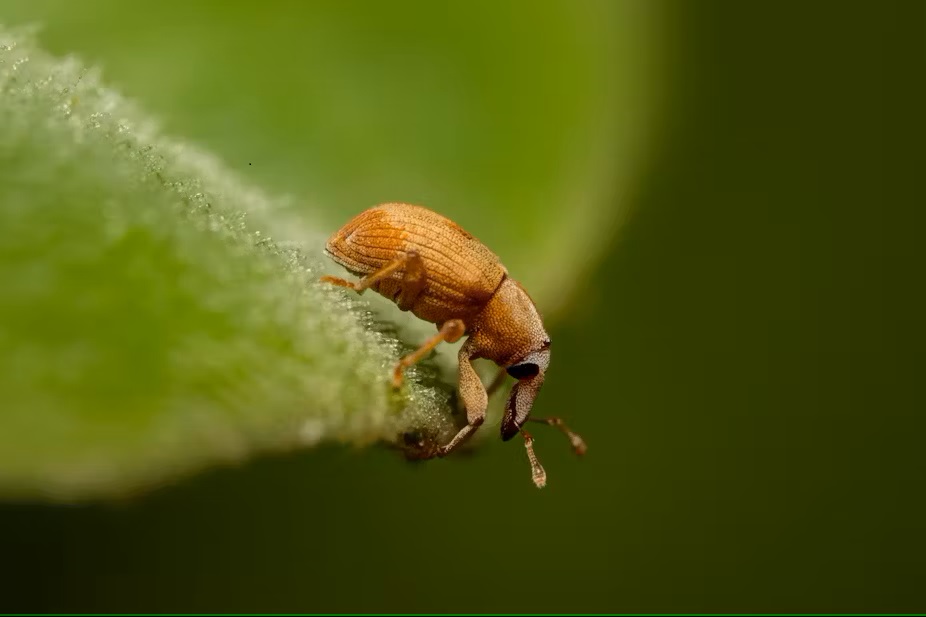Climate change is underway, and human activities such as urbanisation, industrialisation and food production are key contributors. Food production alone accounts for around 25% of global carbon emissions. Ironically, the changing weather patterns and more frequent extreme weather events resulting from climate change also put the world’s food supplies at risk.
In a webinar hosted by Agriculture South Africa’s (Agri SA’s) Natural Resource Centre of Excellence, agriculture-water attorney and professional valuer Adriaan Groenewald unpacked some of the pertinent issues related to water-use entitlements in the agriculture sector.
South Africa is a country known for many things: its resilient beauty, its diverse cultures, and more recently, its social and economic growth.
The World Bank says the world is facing a water quality crisis that is eliminating a third of potential economic growth in heavily polluted areas, while also threatening human and environmental wellbeing.
Tiny weevils are waging war on the invasive water lettuce plant choking South Africa’s Vaal River
- Hits: 4882
Water lettuce (Pistia stratiotes L.), also known as Nile cabbage, is a free-floating aquatic plant from the family Araceae, the same family as the arum lily.
It’s found on every continent except Antarctica and grows well in tropical to sub-tropical climates. Research suggests it may have originated in South America because it has natural enemies there which have co-evolved with the plant. However, fossil records and ancient Egyptian hieroglyphics depicting water lettuce indicate that it may have been present in other regions for millions of years. It was likely spread around the world by early colonists as an ornamental plant for ponds and aquatic gardens.
Today, water lettuce is considered an invasive species in many parts of the world, including African countries, where it has caused significant negative impacts on aquatic ecosystems and human activities.
Recently, water lettuce has invaded one of South Africa’s most important rivers, the Vaal River, on the border of the Gauteng and Free State provinces. This has raised huge concerns for local communities, businesses and stakeholders, as well as Rand Water. Rand Water is the largest bulk water utility in Africa and is one of the largest in the world, providing bulk potable water to more than 11 million people.

I am the deputy director of the Centre for Biological Control at Rhodes University, where I manage the biological control programme on aquatic weeds in South Africa. My team and I are currently working with Rand Water on an integrated management plan for water lettuce control in the Vaal River. This comes after good results in controlling water lettuce in other parts of South Africa and in neighbouring countries such as Zimbabwe and Mozambique since 1985 – thanks to a small species of weevil.
 Rapid water lettuce spread threatens Vaal River — weevils could be the solution
Rapid water lettuce spread threatens Vaal River — weevils could be the solution
The damage
Water lettuce forms dense mats on the water surface. This can reduce light penetration and oxygen levels in the water, negatively affecting all aspects of aquatic life from microscopic plankton to large fish. The mats can also impede water flow, leading to stagnation and increased mosquito breeding sites. Water lettuce can clog agricultural irrigation canals too. Its rapid growth can also interfere with fishing and boat navigation.
Management of water lettuce can include manual removal and the use of herbicides to prevent spread. Herbicides were routinely used to combat water lettuce in South Africa in the early 1980s, and are still relied on heavily in the US, particularly in Florida.
However, these methods are labour-intensive and often insufficient to control the plant’s rapid growth. They can also damage other vegetation.
That’s where biological control comes in. This involves the introduction of natural enemies like insects or pathogens, which can help manage the plant’s population more sustainably and effectively. By importing and releasing a suitable biological control agent, such as the water lettuce weevil Neohydronomus affinis, the negative effects of water lettuce on the environment and local communities can be mitigated.
The weevil
This Brazilian weevil species was first introduced to Africa in 1985 via Australia, following successful control of water lettuce infestations there. The then Department of Agriculture gave permission to release it in South Africa and 500 weevils were released into a heavily invaded pan in the northern Kruger National Park.
Since then, it has been used to control water lettuce infestations in Botswana, Benin, Ghana, Senegal, Zimbabwe, Zambia, Republic of Congo, Côte d’Ivoire, Kenya, Nigeria, Togo, Mozambique and Morocco. Invasions at sites in these countries, no matter how extensive, were generally brought under control within a year.
The impact of N. affinis on water lettuce populations is significant: the combined feeding activities of adult and larval weevils cause substantial damage to the plants, reducing their growth and reproductive potential. Adult weevils chew small holes in the leaves, while larvae tunnel through the leaves, causing them to waterlog and sink.
The ability of N. affinis to produce multiple generations per year enables it to quickly build up populations and maintain pressure on water lettuce populations over time, making it an effective biological control agent for managing water lettuce in affected areas.
As a host-specific insect, N. affinis poses little risk to non-target species or the environment. Biological control of water lettuce in Africa is considered one of the most successful programmes in the fight against invasive species.
So, how are these powerful weevils being used in the Vaal River?
The Vaal River
Water lettuce was first identified on a tributary to the Vaal River in 2021, but local conditions (floods and cold winters) appeared to have limited the spread of this plant. However, at the end of 2023, a large infestation was noticed on the Vaal River and was reported to relevant authorities.
Since then, the infestation has covered up to 40km of the river in the Vaal Barrage area, around the town of Vanderbijlpark, and threatens to spread downstream of the 1,200km long Vaal River.
Rand Water is following an integrated strategy to control and reduce the invasion. Biological control, using the water lettuce weevil, is key to the long term management of the water lettuce invasion. The Centre for Biological Control at Rhodes University is working closely with Rand Water to ensure a constant and abundant supply of the weevils – to do so, the centre has established weevil rearing stations.
Thousands of weevils have already been released into the Vaal River since November 2023 from our mass rearing facility in Makhanda. Weevils are also being reared by businesses and residents who live near the river, as well as Rand Water. The weevils will be released frequently and en masse, at crucial times, particularly after winter when the plants will germinate from seeds. This is termed inundative biological control.
Water lettuce is one of the easier invasive aquatic plants to control, biologically – soon the infestation will be under control. What lurks alongside this invasion on the Vaal River, however, is the water hyacinth, which remains South Africa’s most problematic aquatic invasive plant. It is a super competitor, thriving in the country’s nutrient rich waters. Efforts are underway by the Centre for Biological Control to highlight this threat. The quality of water upstream from the Vaal needs to be urgently remediated, as this is the ultimate cause of both the water lettuce and water hyacinth invasions.

South Africa is a leaking bucket. South African Water Chamber CEO Benoît Le Roy made this clear at the recent Water Institute of Southern Africa (Wisa) Water Reuse Symposium. Ours is a water-scarce country, and yet between 40 and 45% of our water is non-revenue water.
Newsletter Subscribe
AGRI NEWS NET "LIVE" FEED
- CRA Group with it's media AGRI NEWS NET, FARMINGPORTAL.CO.ZA are globally linked with 30 International media's around the world, (30million) sharing exclusive news written and compiled by our News Team together with our team travelling South Africa. Our News is translated in German for the huge parts of the Europe Farming community.
- CRA Media independence is the absence of external control and influence of any other media. Our capacity is to "make decisions and act according to its logic," and distinguishes us from the vast majority of media- Committed, focused and always on time- Good positive News you can trust- We not part of the negative sensational news media of the 2025 century.
- This is AGRI NEWS NET- the world of Farming and Agriculture in your hand. "Good" News you can Trust- Updated 7 days a week- bringing you the latest News in Farming and Agriculture from all over the world. Tomorrow at 6 AM South African time you can start browsing again.
- First things first, scotch is actually a whiskey, er, whisky. Whiskey is the spelling in the United States and Ireland. Whisky is the spelling in Canada, Japan, and Scotland. What sets Scotch whisky apart from other whiskies is that Scotch whisky is entirely produced and bottled in Scotland. There is no wrong way to drink Jameson Irish Whiskey but, we do ask you to drink responsibly.
Popular News Tags
AGRI NEWS NET AUDIO CAST Feeding-
- What Needs to Change in Farming and Agriculture in 2025
- AGRI NEWS RUSH - News Headlines of the Week 18/01/2025
- Farmer safety in South Africa in 2025
- The Economics of Farming and Agriculture in South Africa 2025
- The global wine market 2025
- AGRI NEWS RUSH - News Headlines of the Week 11/01/2024
- Artificial Intelligence: All That Glitters Is Not Gold
- GLOBAL WATER OUTLOOK TO 2025 Averting an Impending Crisis

















